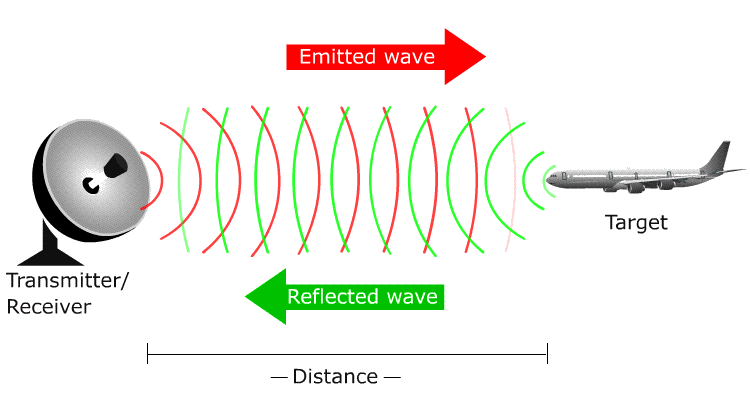Radar technology is the spine of Air Traffic Control. But its success story is far from saturated. During the last 10 years radar started entering automotive technology, manufacturing and even e-health. This article gives a brief history of radar technology, from the first steps around Heinrich Hertz until now.
Experiments with radar began in the late 1800’s, when Heinrich Hertz saw that metallic objects reflected radio waves.1 In the early 1900’s, Christian Hulsmeyer acquired a patent for his "Telemobiloskop", also called a Remote Object Viewing Device.
Ships used this device to avoid collisions in fog.2 For the next couple of decades, there was not a great deal of progress in the use of radar. Robert Page, who later became the Director of Research for the U.S. Naval Research Laboratory, demonstrated the pulse radar in 1936. Experiments, conducted by Page at the U.S. Naval Research Labs (together with Dr. Alfred Taylor and Dr. Leo C. Young) were able to detect basic continuous wave patterns made by ship and aircraft engines, by barely visible indications on an oscilloscope.3
 By timing the pulses on an oscilloscope, the direction of the antenna revealed the angular location of the targets and equally important, range could be determined. Together, the target was located. A “fix” was made – relative to where the antenna was located. As a result of this work, Page, Taylor, and Young have been credited with authenticating the world’s first radar.4
By timing the pulses on an oscilloscope, the direction of the antenna revealed the angular location of the targets and equally important, range could be determined. Together, the target was located. A “fix” was made – relative to where the antenna was located. As a result of this work, Page, Taylor, and Young have been credited with authenticating the world’s first radar.4
The rapid development and success of modern radar during WWII cannot be understated. It was crucial to ending the war in the Allies favor and sooner rather than later. In 1939, the United States Navy came up with the acronym, RADAR, meaning “RAdio Detection And Ranging.”
A major development in the use of radar happened when physicists, John Randall and Harry Boot from the United Kingdom, invented the cavity magnetron5,6 (also in 1939) a device that shortened the pulse of radio wave energy and allowed for smaller radar systems as a whole.
By the end of the war, a wide variety of land and sea-based radars existed and the use of radar for civilian purposes became an exciting proposition. Smaller systems allowed for greater mobility and use over numerous platforms; all of this made radar systems more efficient and more accurate.When WWII ended, scientists and inventors focused on peaceful uses for radar. To these fields, the use of radar was a new and exciting concept.
For civil aviation, radar was of obvious value, but for fields including medicine, meteorology, and marine navigation, the potential use of radar seemed endless. At the same time, the radar gun used by police officers across the country, began to catch drivers with massive V–8 engines that went much faster than the sixty to seventy mile per hour posted limits of the 1950’s and 1960’s.
For offenders, early on, this unfamiliar device must have added a great deal of aggravation to the whole ordeal. Soon, radar became a household word, and people wanted to know not only the ways in which radar could make life better, but how this new technology worked. Initially, the public had concerns about whether these “waves” were safe. Later, convinced they must be, society called for easier meals.

SkyRadar is proud to be part of today's ecosystem which is advancing research and innovation related to radars. SkyRadar provides close range training radars and surveillance radars and holds several patents for medical and IoT use of radar technology.
The subsequent blog dives deeper into radar and sonar waves.
References and Furter Reading
- A typical definition of an oscilloscope is: “An oscilloscope is a laboratory instrument commonly used to display and analyze the waveform of electronic signals. In effect, the device draws a graph of the instantaneous signal voltage as a function of time.” It allows observation of a constantly varying signal over time. For example see: http://www.whatis.techtarget.com/definition/oscilloscope
- Raymond C. Watson, Jr., “Radar Origins Worldwide”, Trafford Publishing, 2009, p. 45.
- http://www.ieeeghn.org/wiki/index.php/Cavity_Magnetron
- Magnetrons are still in use today; they are found in microwave ovens and some radars still contain them. See: http://en.wikipedia.org/wiki/Microwave_oven#Cavity_magnetron




